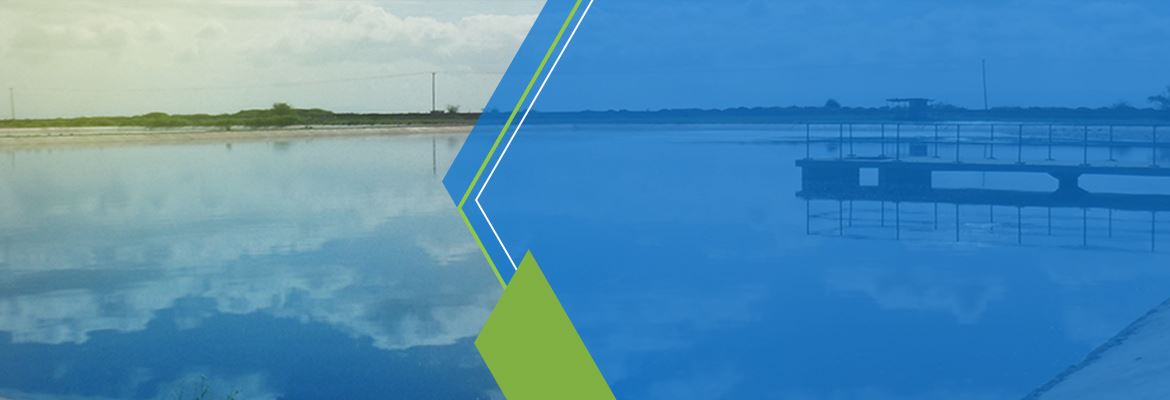What are lagoon systems?
Lagoons are pond-like bodies of water or basins designed to receive, hold, and treat wastewater for a predetermined period of time. As per required or necessity they are also lined with material such as clay or an artificial liner which helps to prevent leaks to the groundwater below. In lagoons waste water is treated with all types of physio-chemical operations. Aeration system is also used to add oxygen to the wastewater for better treatment.
Designing of Lagoon System
Lagoons must be individually designed to fit a specific site and use. Designs are based on such factors as type of soil, amount of land area available, and climate. An important design consideration for lagoons includes the amount and type of wastewater to be treated and the level of treatment required by regulations. Wastewater leaving a lagoon may require additional treatment, or "polishing," to remove disease-causing organisms or nutrients from the wastewater before it can be returned to the environment.
Types of lagoons
-
Anaerobic Lagoons
-
Naturally Aerobic Lagoons
-
Aerated Lagoons
Anaerobic Lagoons
The word anaerobic means "without oxygen", which describes the conditions inside this type of lagoon. Anaerobic lagoons are most often used to treat animal wastes from dairies and pig farms, commercial or industrial wastes, or as the first treatment step in systems using two or more lagoons in a series. Typically, in anaerobic lagoons wastewater is hold for approx. 20 to 150 days. They are relatively deep (usually 8 to 15 feet) and work much like septic tanks.
Inside an anaerobic lagoon, solids in the wastewater separate and settle into layers. The top layer consists of grease, scum, and other floating materials. If not preceded with septic tanks, the layer of sludge that settles at the bottom of an anaerobic lagoon eventually accumulates and must be removed. The wastewater that leaves an anaerobic lagoon will require further treatment.
Odour can be a problem with anaerobic lagoons. However, in many cases odour can be managed through a variety of methods, such as adding sodium nitrate, recirculating pond effluent, and through regular maintenance.
Naturally Aerobic Lagoons
Dissolved oxygen is present throughout much of the depth of aerobic lagoons. They tend to be much shallower than other lagoons, so sunlight and oxygen from air and wind can better penetrate the wastewater. In general, they are better suited for warm, sunny climates, where they are less likely to freeze. Wastewater usually must remain in aerobic lagoons from 3 to 50 days to receive adequate treatment. Wastewater treatment takes place naturally in many aerobic lagoons with the aid of aerobic bacteria and algae. Because they are so shallow, their bottoms need to be paved or lined with materials that prevent weeds from growing in them.
Sometimes, the wastewater in aerobic lagoons needs to be mixed to allow sunlight to reach all of the algae and to keep it from forming a layer that blocks out the air and sun.
Aerated Lagoons
These systems use aerators to mix & add oxygen to the wastewater. They are sometimes referred to as partial-mix or complete-mix lagoons depending on the extent of aeration. Partial-mix aerated lagoons are often anaerobic lagoons that have been adapted and upgraded to receive more wastewater.
With the exception of wind-driven designs, most aerators require energy to operate. However, energy costs are almost always considerably less than those for other mechanical treatment systems. Aeration makes treatment more efficient, which offsets energy costs in some cases. Aerated lagoons require less land area and shorter detention times. Exact detention times for wastewater in lagoons are based on factors such as the particular design, the amount of wastewater to be treated, and the level of treatment desired.
Advantages of Lagoon System
-
BOD can be removed up to 70-90%
-
Suspended solids can be removed up to 70-80%
-
Coliform removal 60-99%
-
Simultaneous degradation of sludge in the bottom layer and organics in the top layer.
-
No primary or secondary settling required with no sludge recirculation.
-
Anaerobic bottom layer and aerobic top layer.









